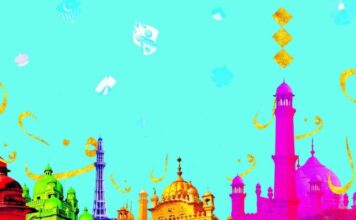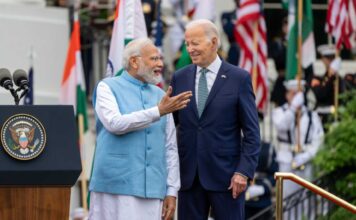By Bal Ram Singh, PhD
Like many things in life one has to learn Brahmacharya to practice it as part the Yama, as described in Patanjali Yogsutra. The very first sutra of Patanjali Yogsutra says, Atha Yoga Anushashanam – meaning that let’s follow the discipline of yoga.
The discipline of yoga is well established, and the Brahmacharaya element of the Yama holds the crux of training and practice, critical for following other aspects of Yama.
Brahmacharya is not a state but a practice that requires knowledge and training. It usually starts at home with the mother who nurtures the body and mind from the womb to infant years, and is advanced by the father and family who provide challenging circumstances to test and explore. It continues after the upanayan sanskara or the sacred thread ceremony, with the teachers and Guru.
Brahmacharya is one of the four ashramas or stages of life one passes through according to Vedic texts, the other three stages being the garhasthya or stage of householder, the vanprasthya or the stage forest dweller, meaning an association with the nature, and finally the sanyasa, the stage of the renunciation.
The brahmacharya is first and the foundation of the human life, and involves learning lessons, such as the following:
सत्यं वद। घर्मं चर। स्वाध्यायान् मा प्रमदः।’
‘Satyam vada; dharmam chara;
svãdhyãyãn mã pramadaha’
‘Speak the truth. Abide by your dharma.
Never be idle in your studies’
(Taittireeya Upanishad: 1/11)
‘मातृदेवो भव। पितृदेवो भव।
आचार्यदेवो भव। अतिथिदेवो भव।’
‘Matruvedo bhava, pitrudevo bhava, atithidevo bhava’
‘Know your mother to be like a goddess, know your father to be like a god, know your teacher to be like a god, know a guest to be like a god’
(Taittireeya Upanishad: 1/11)
‘यान्यनवद्यानि कर्माणि। तानि सेवितव्यानि। नो इतराणि।’
‘Yãnyanavadyãni karmãni, tãni sevitavyãni, no itarãni’
‘O disciples! Only do those actions which are in accordance with the shastras and society. Do not perform actions that oppose this’
(Taittireeya Upanishad: 1/11)
‘यान्यस्माकं सुचरितानि तानि त्वयोपास्यानि। नो इतराणि। ये के चास्मत्व्छ्रेयांसो ब्राह्मणाः। तेषां त्वयाऽऽसनेन प्रश्वसितव्यम्।’
‘Yãnyasmãkam sucharitãni tãni tvayopãsyãni, no itarãni, ye ke chãsmachchhreyãnso brãhmanãhã, teshãm tvayã’’sanena prashvasitavyam’
‘Moreover, only adopt our good conduct, nothing else. After leaving here, if you find a teacher better than us, then respect him, pay homage to him by offering him a seat.’
(Taittireeya Upanishad: 1/11)
These traits are practical, demonstrated and tested at Gurukula, and pronounced at the dikshanta or graduation ceremony certified by the Guru. Demonstration of that skill (dakshata) was the reward of satisfaction for the guru, not the envelope passed on these days to pretending gurus these days even at the best of the gurukulas in existence in India. That just shows the deterioration of the shiksha or the education system.
Brahmacharya is the foundation pillar that continues throughout during the other stages of life, neglecting which Yama takes a notice. Notice of Lord Yama is inviting one’s end. It is like one learns to read and write in the primary school, that continues throughout the life even if one becomes a PhD, neglecting reading and writing will end one’s intellectual life.
The modern education system as primary, middle, high, and higher education, has nothing to do with imparting the lessons of brahmacharya, it has everything to do with mugging up religious books, spitting them out at exams, receiving certificates, and practicing falsity wittingly or unwittingly. The consequences are there for all to see.
In classical Latin, “universitas” meant the whole, or a totality; hence the English words “universe” and “universal”. In late Latin it also began to mean a corporation or collectivity – a group of people who have banded together and act together. The earliest universities were developed under the aegis of the Latin Church by papal bull as studia generalia and perhaps from cathedral schools.
Scholars occasionally call the University of Al Quaraouiyine (name given in 1963), founded as a mosque by Fatima al-Fihri in 859, a university. The first universities in Europe with a form of corporate/guild structure were the University of Bologna (1088), the University of Paris (c.1150, later associated with the Sorbonne), and the University of Oxford (1167).
It is interesting that Takshashila and Nalanda, usually touted as the ancient universities of India, do not appear in the list of universities historically. It is perhaps worthwhile to consider the status of higher education particularly in India to evaluate the possibility of brahmacharya ever returning to its population.

Balram Singh is a Professor and the President of the Institute of Advanced Sciences, Dartmouth, Massachusetts, researching Ayurveda, Yoga, Vedic education, and Vedic social and political traditions. He is also adjunct faculty at Jawaharlal Nehru University (JNU), New Delhi.













